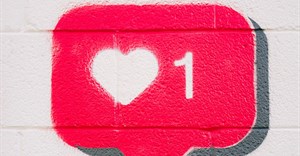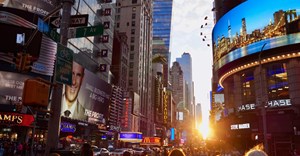Trending




 Sabre EMEA 2024 Awards: Razor PR, Retroviral top SA agenciesDanette Breitenbach
Sabre EMEA 2024 Awards: Razor PR, Retroviral top SA agenciesDanette Breitenbach
Fall in entries for Digital Loeries points to adoption issues

The Digital Media & Marketing Association (DMMA), formerly the OPA, reports Adex figures for June 2010 showed an increased in online ad spend to R61 240 862 - up from R49 556 438 in May. Year-on-year growth in online ad spend is expected to be equally dramatic as it rise from R450 million in 2009 to R600 million in 2010 (at a guess, add another R200 million on top of that for revenue generated by Google locally), according to DMMA chair Adrian Hewlett.
Should not hold true
So while it can be argued that the recession would have impacted on Loeries entry volumes in general (Tony Koenderman reports entries declined to 2924, compared with 3077 in 2009), this should not hold true for the digital and online advertising categories.
Bryce, who recently joined Quirk eMarketing as its new CCO, says inter-agency relationships might be partly to blame for the fall in these categories. Bryce points to some ruffled feathers a couple of years ago, when BBDO NY won, among others, a Gold Lion in Cyber for the HBO "Voyeur" campaign. The digital shop that built the site, Big Spaceship, failed to receive any credit during the awards show until jury chair Colleen DeCourcy mentioned the "forgotten partner" - quote AdPulp.
Many agencies continue to view digital outfits as production shops, says Bryce, and the HBO "Voyeur" affair sparked a debate on attribution for multi-agency projects that is still to be resolved. Bryce is quick to add that the Loeries do try to ensure that all parties are credited, including both the 'ad agency' as well as 'digital specialist'. It is in the industries' interest for the Loeries to bridge any perceived divide, says Bryce.
2010 digital entries also disappointing
Entries for 2010 FIFA World Cup-specific digital campaigns were also disappointing, even with an extension to the original deadline. This was in contrast to good volumes for campaigns in the traditional (TV, radio, print etc) world cup-specific categories. Bryce is unsure as to why this should be but did venture that FIFA's sabre-rattling might have scared off smaller brand advertisers. TV might have owned the world cup but online was definitely also in the game - a lack of entries suggests missed opportunities by brands and agencies alike.
Mobile also saw disappointing numbers - Bryce ventured that this category offers plenty of agency opportunity for awards, simply due to some serious lack of competition. He suggests agencies need to seriously beef up on mobile expertise.
In spite of the disappointing number of entries, the pendulum, Bryce suggests, continues to swing towards digital as economic uncertainty squeezes budgets and speeds up the move to online and access continues to grow amongst the South African population.
Quality has increased substantially
On the upside, the quality of entries has increased substantially, says Bryce, especially where video is integrated as part of the offering. Good casting, proper direction and content playing seamlessly with the user experience gave entries the emotional appeal they might have lacked before. Online advertising is starting to bringing emotional messages to the monitor, says Bryce, even though the lack of bandwidth remains a problem.
Social media campaigns have embraced social networks for the brand cause with the birth of community editors, and this investment in individuals is seeing the creation of useful content and added-value helping to drive advertising messages, says Bryce.
Brands need to join in the dialogue on a peer level, rather than try and hoodwink the audience, says Bryce as he ventures into the debate on the recent Cell C/Trevor Noah foot-in-mouth experiment with social media, which has sadly dominated discussion on that organisation's rebranding exercise.
Six criteria
All entries at the Loeries are judged on six criteria, namely innovation, quality of execution, and relevance to the brand, target audience and chosen medium; the sixth criterion excludes the possibility of winning a Gold Loerie for self-promotional work.
Online advertising tilts around consumer experience and, asked where this fits into the judging criteria, Bryce says relevance to the target audience and how and where the online user experience is initiated are considered during judging.
Bryce, whose second stint this is as jury president for the Digital Loeries, is passionate about his industry as well as the Loeries. He firmly believes the awards allows "the cream to rise to the top", regardless of the size or focus of an agency.
Serious rebuke
Even so, the decline of entries in the digital categories constitutes a serious rebuke to industry's spin that it has embraced digital and its more than 5 million (expected to rise to 6 million by year end) connected consumers.
- Bizcommunity special section: The Loerie Awards
- Bizcommunity search: "Loerie"
- Loeries site: www.theloerieawards.co.za
- Loeries Twitter: @loeries2010
- Loeries Twitter Search: "Loerie"
- Google News Search: "Loerie"
- Facebook: The Loerie Awards page










